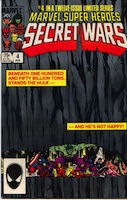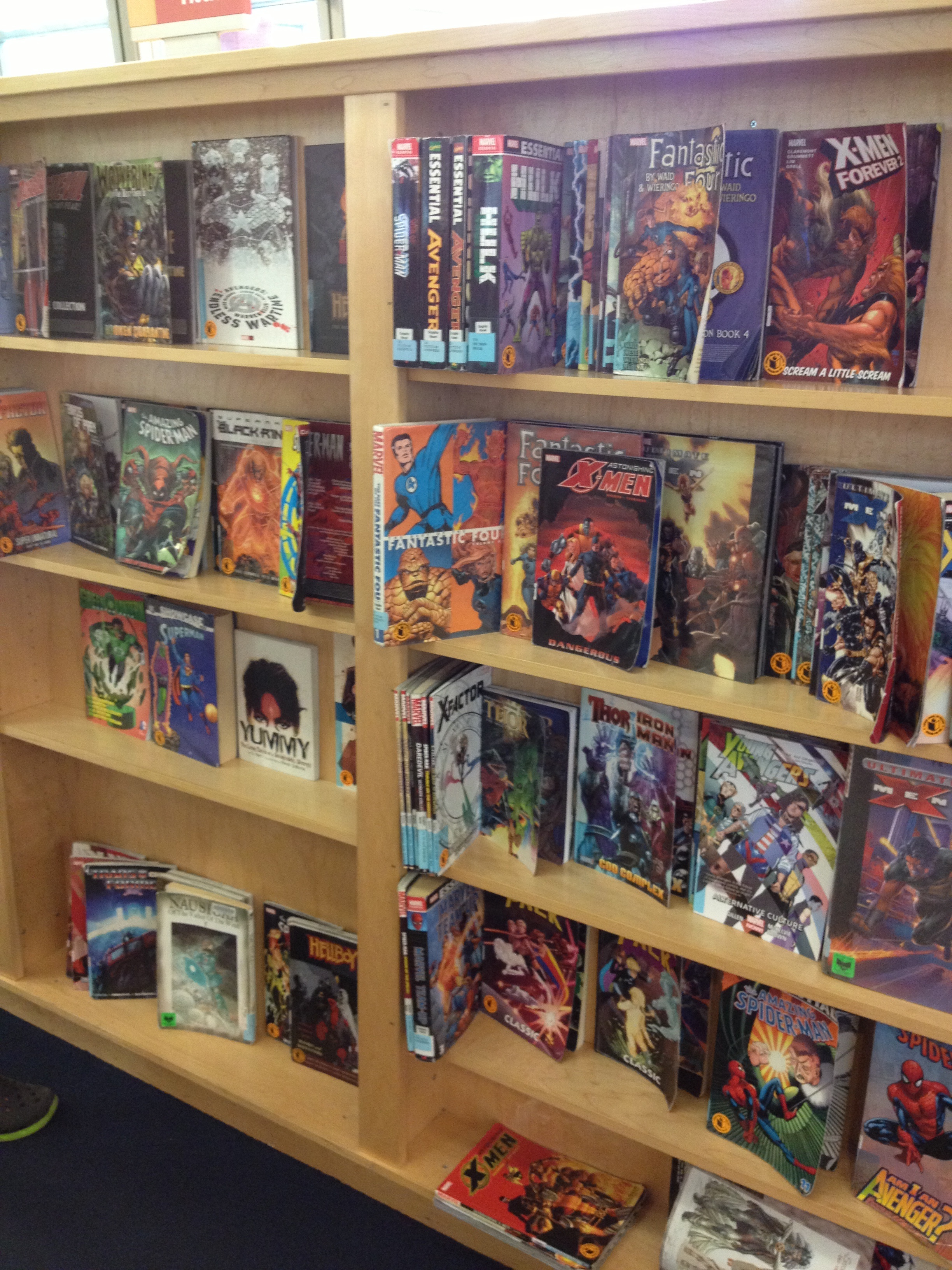TeachingBooks.net is delighted to welcome award-winning graphic novelist Gene Luen Yang as our featured guest blogger.
Each month, we ask one distinguished author or illustrator to write an original post that reveals insights about their process and craft. Enjoy!

Comics, Then and Now
By Gene Luen Yang
When I was in the fifth grade, I convinced my mother to take me to our local comics shop. While I browsed the shelves, she stood by the door with her arms crossed, silently judging an entire industry. I went home with Secret Wars #4, the latest issue of Marvel’s cosmic, no-holds-barred superhero slugfest. It’s like Homer’s Iliad, only in outer space and without all the boring pathos. It was everything my 10-year-old heart desired.
That evening, I made the mistake of letting my mom flip through it.
 She pointed to one of the panels. “Why isn’t this woman wearing any clothes?”
She pointed to one of the panels. “Why isn’t this woman wearing any clothes?”
“That’s Volcana. She’s made of molten lava,” I explained. If my mom had simply taken the time to read the story, the reason for Volcana’s sartorial choices would’ve been obvious. “She’s always on fire, so her clothes would just burn off.”
My mother was unconvinced. That was the last time she took me to that shop.
Luckily, a friend from school showed me a workaround. Jeremy had been reading comics since he learned to read. He kept his collection in long cardboard boxes beneath his bed, individual issues neatly sorted by title and issue number. By fifth grade Jeremy was already an expert, a connoisseur of the four-color art form.
One bright Saturday afternoon, when the athletic kids were out on the soccer fields, Jeremy and I arranged to be dropped off at the library. We watched from the window until our parents drove out of sight and hiked 20 minutes to the nearest comics shop. We bought as many as we could afford out of the quarter bin (two each, in case you’re wondering).
We walked 30 minutes back to the library—you can’t go quite as fast with your nose buried in a comic book—and checked out the largest volumes we could find. These would hide our purchases and keep them in pristine condition.
“I didn’t know you were so interested in Egyptology,” my mother said on our way home.
I nodded and looked out the window.
***
Things are different now; kids no longer have to sneak. The graphic novel section of my local library rivals the one at my local comics shop in both size and selection.
Comic books are increasingly recognized as an important part of the literary landscape. They’re published by prestigious houses and nominated for prestigious awards. Today’s librarians, educators, and parents understand their value.
As a visual medium that’s meant to be read, comics act as a bridge between the media we watch and the media we read. Librarians stock them for fans of the format and teachers of second language learners and reluctant readers use them to instill a love of reading in their students.
Comic books have also proven to be worthy of study in and of themselves. They combine two distinct media: words and images. In the hands of skilled storytellers, the relationship between the two can be complex and nuanced. They can support each other, or contradict one another, or pass the narrative responsibility back and forth like a baton.
These days, even my mom reads comics. Admittedly, they’re mostly by me, but they’re still comics.
She still won’t give Secret Wars #4 a fair shake, though. In her mind, Volcana is still nothing but a floozy. I guess some kinds of progress come easier than others.
Listen to Gene Luen Yang introduce and pronounce his name.
See all available resources for Gene Luen Yang.
This text may not be reproduced without the expressed written consent of Gene Luen Yang. All images courtesy of Gene Luen Yang.


We loved the book. Had wonderful discussions on stereotypes. Your perspective was wonderful and refreshing for all of my students this year. Our culminating activity was creating a graphic novel/comic, using a deity and an injustice that is “fixed” within the plot.